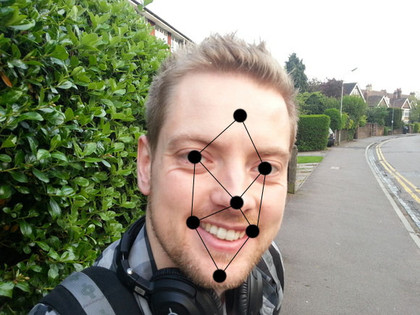ARM details next generation smartphone features
Why GPUs hold the key to the next-generation of kit

Chip giant ARM has given TechRadar a fascinating insight into what to expect our phones and tablets to be capable of doing in the next two years.
Speaking as the company launched its next-generation graphics processor, the Mali-450 GPU, ARM's Steve Steele and Jem Davies are looking forward to the next generation of devices.
Mali GPUs may not be all that familiar to the consumer – but the devices that feature them certainly are, with both the Samsung Galaxy S3 and its predecessor the S2 featuring the Mali-400.
The 450 bringing twice the performance (and potentially twice as many cores) enabling even more advanced graphics.
The next generation
And by the time we see devices carrying that chip we will already be seeing a whole new generation of Mali products carrying the T604 chip and bringing huge potential for cool new features, allowing more computation to be done by the GPU - known simply as GPU compute.
"GPU compute is exceptionally important and there are so many things it helps with," said ARM senior product manager Steve Steele. "They include video imagery, audio, games engines and animation.
"But the thing that's real and we can see being planned by our partners is 'computational photography'.
Sign up for breaking news, reviews, opinion, top tech deals, and more.
"We'll be seeing high-end digital still-like processing in a device whose primary function is actually being a phone or tablet.

"Things like panorama stitching image recognition, face detection, smile detection – maybe you could have scowl protection as well!
"Cameras on these devices will be capable of recognising landmarks and looking at context of the picture determining that in this big picture there's a nice picture just here that's worth saving.
"Plus there's image stabilisation and editing the picture on the phone and certainly filtering and also things like high dynamic range.
"It's the next stage and making them more sophisticated, better and in a more energy efficient way.
"By doing them on the GPU you can get performance and the energy efficiency."
Seeing behind the curtain
ARM's VP of Technology, Media Processing, Jem Davies adds that knowing how the features work is unnecessary for consumers.
"For a consumer who is buying a phone I almost wonder whether they need to worry about GPU compute at all," he said "What they care about is 'what are the features?' and 'what is the battery life?'
"With GPU compute we can give you the features you've asked for and the battery life you've asked for and you shouldn't need to worry about it.
"These features aren't new – but we're putting them in a $200 smartphone with a battery that doesn't have to be charged by 6 o'clock.
"A DSLR will always have an advantage – because there are always things you can do with that much glass in front of the image processor - but with vast amounts of compute power you can do some very cool stuff."
Beyond the camera
In other areas beyond the camera, Davies continues the theme that better features have to be balanced with how much power is used.
"In terms of gaming you'll be saying 'ooh that's pretty' but it won't drain the battery. You'll see games physics improve and there's some work going on to examine how good it is for speech recognition.

"There's some really interesting research about the applicability about [speech recognition] as an enabling technology.
"I am providing a tool kit and some people will pick this up and do cool stuff that I haven't even though about.
"That goes back to ARM's business model – we enable our partners."
Split focus
As a result of the different needs of its partners ARM has split its focus into pure graphics and the GPU compute.
"We've now split our roadmap in two," explained Steele. "We have a graphics-only roadmap to focus on the very best efficient graphics we can possibly do, then the graphics and compute roadmap which includes all of that plus the compute features. You really need products in both of those to do it well.
All of this technology is not just some vague prediction, in fact the first products to feature the Mali-T604 will arrive this year.
And beyond that, the Mali-T658 has already been announced and is expected to arrive in products in 2013 with the next generation, code-named Skrymir, hitting in 2014.

Patrick Goss is the ex-Editor in Chief of TechRadar. Patrick was a passionate and experienced journalist, and he has been lucky enough to work on some of the finest online properties on the planet, building audiences everywhere and establishing himself at the forefront of digital content. After a long stint as the boss at TechRadar, Patrick has now moved on to a role with Apple, where he is the Managing Editor for the App Store in the UK.